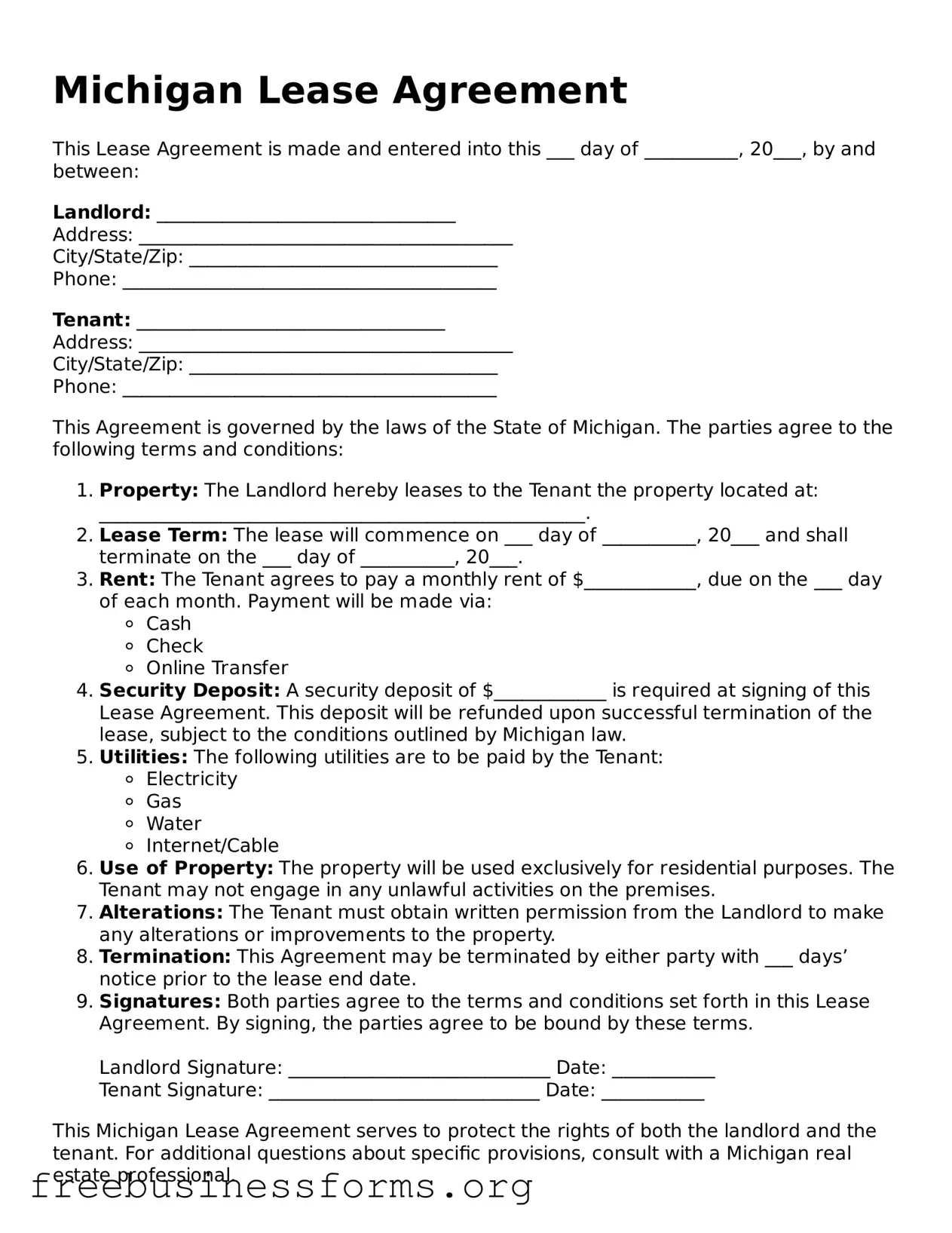Michigan Lease Agreement
This Lease Agreement is made and entered into this ___ day of __________, 20___, by and between:
Landlord: ________________________________
Address: ________________________________________
City/State/Zip: _________________________________
Phone: ________________________________________
Tenant: _________________________________
Address: ________________________________________
City/State/Zip: _________________________________
Phone: ________________________________________
This Agreement is governed by the laws of the State of Michigan. The parties agree to the following terms and conditions:
- Property: The Landlord hereby leases to the Tenant the property located at:
____________________________________________________.
- Lease Term: The lease will commence on ___ day of __________, 20___ and shall terminate on the ___ day of __________, 20___.
- Rent: The Tenant agrees to pay a monthly rent of $____________, due on the ___ day of each month. Payment will be made via:
- Cash
- Check
- Online Transfer
- Security Deposit: A security deposit of $____________ is required at signing of this Lease Agreement. This deposit will be refunded upon successful termination of the lease, subject to the conditions outlined by Michigan law.
- Utilities: The following utilities are to be paid by the Tenant:
- Electricity
- Gas
- Water
- Internet/Cable
- Use of Property: The property will be used exclusively for residential purposes. The Tenant may not engage in any unlawful activities on the premises.
- Alterations: The Tenant must obtain written permission from the Landlord to make any alterations or improvements to the property.
- Termination: This Agreement may be terminated by either party with ___ days’ notice prior to the lease end date.
- Signatures: Both parties agree to the terms and conditions set forth in this Lease Agreement. By signing, the parties agree to be bound by these terms.
Landlord Signature: ____________________________ Date: ___________
Tenant Signature: _____________________________ Date: ___________
This Michigan Lease Agreement serves to protect the rights of both the landlord and the tenant. For additional questions about specific provisions, consult with a Michigan real estate professional.
